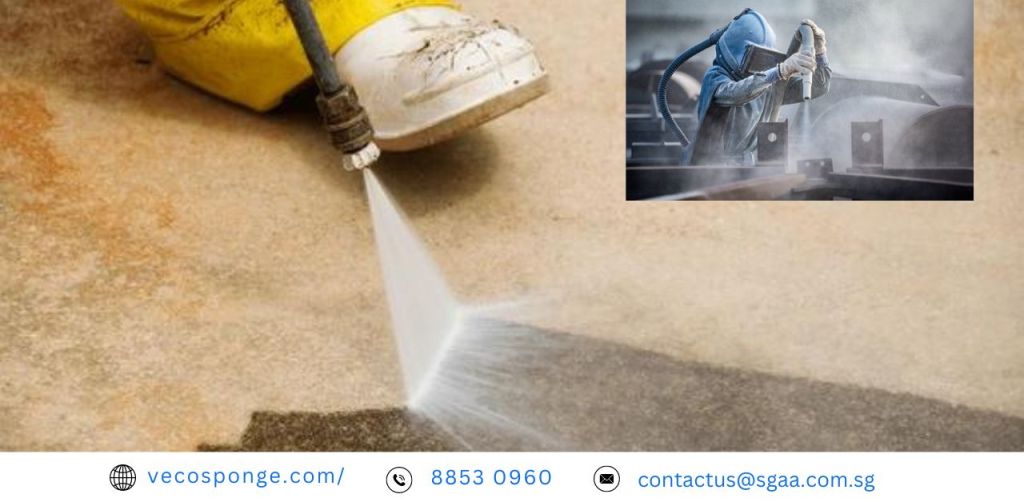Basically, the purpose of an abrasive cleaning technique is to get rid of stubborn debris in small spaces. They are available in liquid or powder form. Because they are powerful enough to remove dirt without requiring a lot of effort, they eliminate the need for “elbow grease.” For added ease, we advise using a scouring pad in addition to the cleanser.
The product’s components are the reason for its abrasiveness. The reason why minerals with high cleaning properties like feldspar, quartz, silica, and calcite is so little. The product in question and the surface it is being used on will determine how abrasive it is. Before using an abrasive cleaner, you should always read the abrasive cleaning agent’s label and the manufacturer’s directions for the surface. This is because they have the potential to be extremely potent and may harm the object if it is not intended for such a potent substance to be applied to it.
Surfaces can be disinfected by certain abrasive cleansers. This is achieved by the presence of an antimicrobial agent, which aids in lowering the amount of germs that exist on the surface. Their durability and occasionally antiseptic qualities make them an essential addition to your cleaning supply collection. The purpose of the cleaning will determine which minerals are needed for their substances to effectively clean it.
For instance, a powdered version works better to remove oils, so you might want to use it to remove a greasy film from the office kitchen sink. To eliminate food particles or mold, it is recommended to utilize an abrasive cleaning that incorporates bleaching ingredients. Use one whose contents list includes sodium hydrosulphite or oxalic acid if you wish to remove rust.
What Are The Characteristics of Abrasive Cleaning Products?
Since there are many different types of abrasive cleaning agents on the market today, they all need to have different qualities. The cleaning solution needs to go rapidly and leave no trace. All impurities, polar or non-polar, must be able to be eliminated by the cleaning solution. It must not result in rusting, cracking, or swelling of the instruments and items being cleaned. Additionally, employing cleaning products has to go by all environmental, health, and safety laws.
What Are Different Abrasive Cleaning Products?
Usually referred to as abrasive cleansers, abrasive cleaning chemicals are made to remove medium to heavy soil accumulations that are frequently found in small spaces and cannot be eliminated by simple wiping or cleaning. The abrasive materials are available in powder and liquid form and have an inherent elbow grease that reduces the amount of force needed to remove soil and facilitates a more easier cleaning process. This category also includes scouring pads.
A range of components, including tiny mineral particles or a network of fine steel wool, copper, nylon, or metal particles embedded in a solid plastic matrix, provide the abrasive action when utilizing these products. These combined with the pressure and friction from the cleaning procedure can assist lift those tough stains and blemishes.
Dry Abrasive Cleaners
The cleansing power of powdered cleansers, which are well-known among ordinary household cleaning solutions, is attributed to fine particles of common minerals including calcite, quartz, and silica. Small quantities of surfactants are also present in powdered cleansers to help remove oilier soils, including the greasy residue that accumulates around the plughole and side of sinks after dishwashing.
Generally, these treatments contain a bleaching ingredient when it comes to cleaning up food, drink, or those stubborn mold stains. If the product has a rust stain removal feature, it normally contains either sodium hydrosulphite or oxalic acid to make the process as simple and uncomplicated as feasible.
Wet Abrasive Cleaners
A better alternative is wet abrasive. Solid abrasive particles in a thick liquid matrix take on a powerful form in liquid cleansers. The outcome is a gentler abrasive action compared to powdered cleansers since it contains more softer abrasives than are typically found in powdered cleansers. They work well when deeper cleaning is needed.
Disinfecting Abrasives
Certain abrasive cleansers contain antimicrobial agents to lessen the amount of bacteria on unclean surfaces, and they can help disinfect surfaces. Household bleach is the most widely used product in this category that we are all probably familiar with. Any product falling under this category will bear the label of disinfection. Disinfectants should be used as part of a two-step cleaning procedure, with cleaning coming first and then disinfecting, as is the case with any cleaning procedure.
Abrasive Cleaning Tools
Using tools is the final of the four popular abrasive cleaning methods. The two most popular options are wire wool scouring pads, which are more durable than scouring pads. When used with the right product, these instruments may effectively clean surfaces and leave them shiny and appealing. But after a while, the metal pad starts to crumble and the cleaning solution runs out. To prevent a reduction in their effectiveness and efficiency, they ought to be changed whenever there is a noticeable alteration to their appearance.
Conclusion
It goes without saying that all abrasive cleaners and cleaning products must be used with the utmost care and respect, even though they are excellent for removing the toughest stains and blemishes. To reduce the chance of damage during the abrasive cleaning process, always read the instructions on bottles and make sure the equipment are appropriate for the surface you plan to use them on.

Leave a comment